Rock On
When I was very young I thought that what I saw today would be available for me to see tomorrow and next year and always. I thought that the people I loved would be there tomorrow and next year and always. I thought that the things I learned about the world would be permanently fixed; unchangeable.
We often drove to see relatives in small towns and on ranches, which required car trips down country highways through scrub oaks, mesquite, prickly pear, and limestone rocks. My mother particularly liked the countryside and always pointed out plants, animals, barns, and houses that she thought were unique or notable. This bored me- I did not quite appreciate the look of the land in which I was growing up, nor did I like the little rock houses that were built on Texas ranches in the 20’s, 30’s, and 40’s. They were too rough for my childish taste. They were not grand enough to match the houses I really admired in the city; houses with white paint and columns and little gazebos on the lawn. (And swimming pools, not stock tanks out back.) It certainly never occurred to me that the land through which we drove might change forever anytime in the future, let alone during my lifetime. By the time I became old enough and wise enough to appreciate the curves of the hills, the rough outcroppings of rocks, and even the charm of prickly pear, things were already starting to change. Trees were cut to build new highways. Vegetation was cleared for shopping malls. Limestone creek bottoms were filled in for housing developments. And, the little rock ranch houses close to town were torn down to be replaced with more modern styles.
My first family loss came in my 7th grade year when my beloved great-uncle died. I grieved for his passing and for the emptiness in the ranch house when only my great-aunt was left in it. A little piece of my world had died. With subsequent deaths and radical changes in what had been a unique landscape coming faster and faster, I realized that being settled, being safe was illusion. I quit procrastinating on taking photos, on writing notes, on hearing stories. I learned to treasure each day, each year. I valued each person because I never knew when a family member would die unexpectedly, leaving unanswered questions about family history and intentions.
Now I paint prickly pear, even on a greeting card meant to bring joy to another person, instead of taking the pads and spines for granted. I look at the artistry of the little rock houses made by the ranchers and I recognize a kindred heart for the art of mosaic- using the pattern and color of stones and the lines between stones to be expressive. I even have a sort of hobby of taking photos of little rock houses I admire in the city and in the country, and appreciating how they make use of available materials, how they were built to last, and how they were designed to please the eye. I feel that the artistic spirit of the stone has lasted and has even been augmented by time. I am thankful for little rock houses, for scrub oak, for limestone cliffs and creek bottoms, and for prickly pear plants that brand my home.

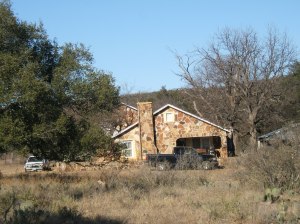
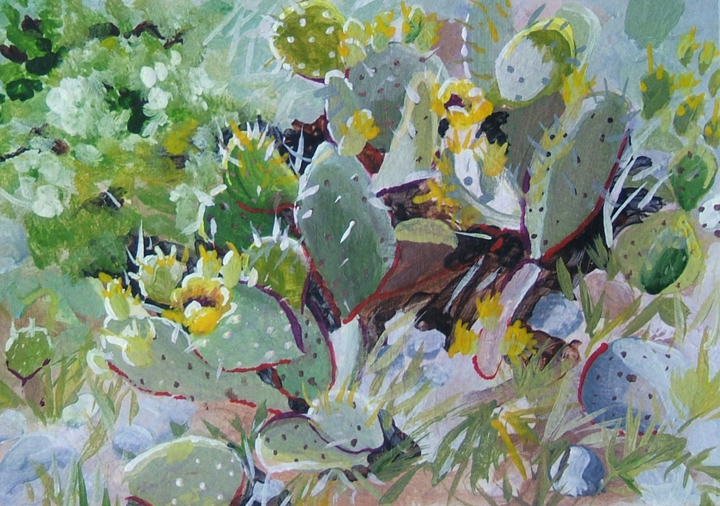
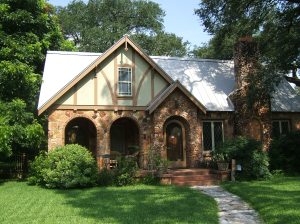
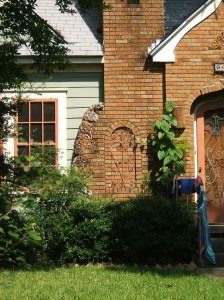
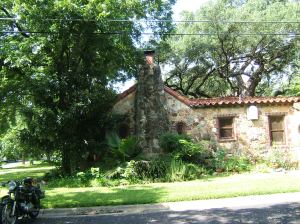
I recognize some of those houses from walks in the neighborhood!
Yes, you do.
The old saying that “you can never go home again” comes to mind. The “home” you remember doesn’t exist in the remembered form anymore. People are no longer “there”. The landscape may even be become unrecognizable. You can’t even enter old home building if the “new” owners don’t invite you in.
The charm we see in little rock houses is charming to us becuase of our personal heritage. What will our children’s children see when they look at those same houses?